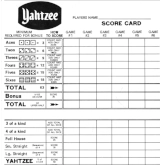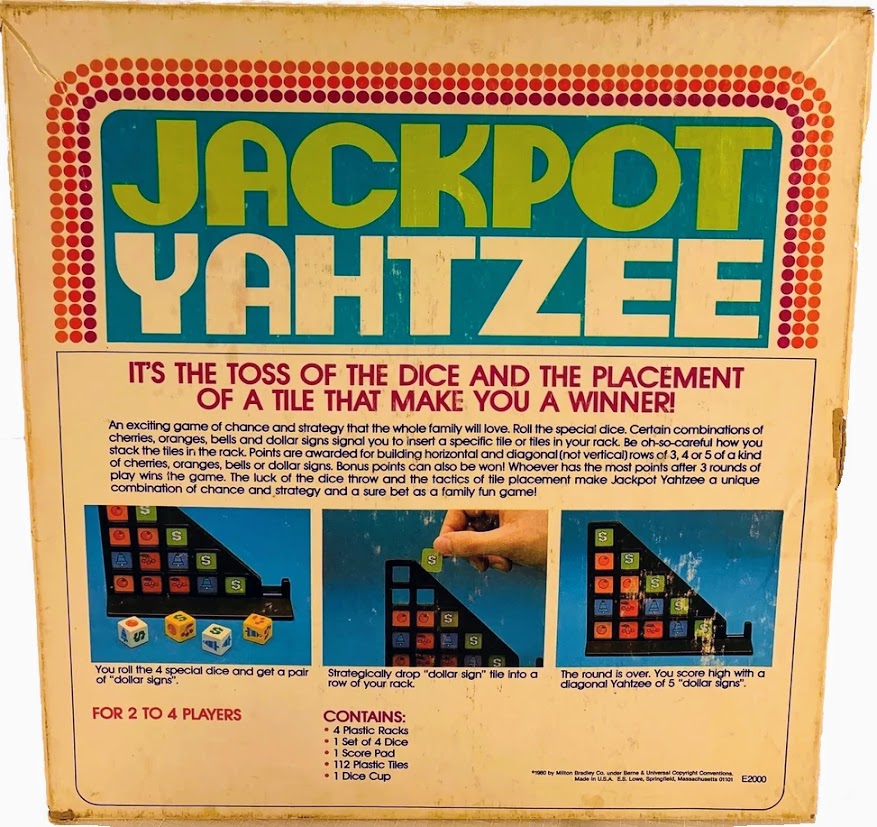Yahtzee Equipment
Five dice, one plastic shaker, and a pencil. It seems so simple, doesn’t it? But in reality, Yahtzee equipment can be as complicated and varied as the game itself. Don’t be caught off guard by custom dice or exotic memorabilia. Embrace the diversity and make the game your own. From the playing surface to backstops, rolling trays, and good luck charms, learn about the intricacies of Yahtzee gaming materiel and show up to the table prepared.

The arrival of summer and the easing of lockdown restrictions are setting the stage for what is expected to be a record-setting year of in-person Yahtzee games. After the surge in electronic and online Yahtzee brought on by social distancing measures during 2020, the pendulum is swinging back to physical tabletop gaming. But game hosts risk disaster if their Yahtzee set has been sitting unused for an extended time.
If you are making plans to host a sanctioned Yahtzee tournament or even an informal game, remember to check the status of your Yahtzee set beforehand. Nothing will nosedive an otherwise perfect day of festivities than a missing die or lack of scorecards. While your guests will no doubt appreciate your barbecue and lemonade, they will be truly impressed if your Yahtzee equipment is complete and in ship-shape condition.
Essential Yahtzee Equipment: The Core Components
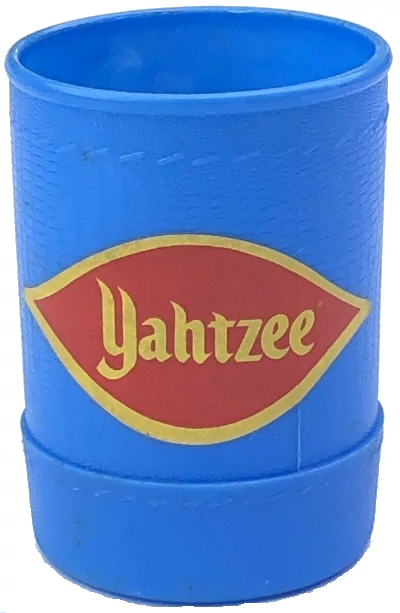
Yahtzee, the beloved dice game invented in the 1940s by Canadian couple Milton and Nancy Lowe and later commercialized by Milton Bradley (now Hasbro), has become a staple in game nights worldwide. With over 50 million Yahtzee sets sold annually, this combination of luck and strategy continues to captivate players of all ages. At its core, Yahtzee requires specific equipment to deliver its unique gaming experience.
Whether you're a casual player enjoying occasional family game nights or a dedicated enthusiast hosting competitive Yahtzee tournaments, having the right equipment ensures an authentic and enjoyable experience. This comprehensive guide covers everything you need to know about official Yahtzee sets, components, and the evolution of Yahtzee equipment over its 75+ year history.
Historical Note:
While modern Yahtzee sets are standardized under Hasbro's production, vintage collectors recognize distinct variations in equipment from the E.S. Lowe era (1956-1973), Milton Bradley period (1973-1998), and contemporary Hasbro editions (1998-present). Each period features unique design elements that make them instantly recognizable to enthusiasts.

Yahtzee Dice: The Foundation of the Game
Every official Yahtzee set includes five six-sided dice, traditionally white with black pips representing numbers 1-6. These dice are the primary game mechanism, and their quality significantly impacts gameplay and overall experience.
Standard Yahtzee Dice Specifications:
- Dimensions: 16mm (approx. 5/8 inch) cubes
- Material: High-impact polystyrene or similar polymer
- Weight: Approximately 5 grams per die
- Features: Rounded corners for smooth rolling, recessed pips for durability
- Balance: Precision-engineered for statistical fairness
The dice are, quite literally, the rolling heart of Yahtzee. Without them, there's no game, and the quality of your dice significantly impacts the fairness and enjoyment of each session. While other competitive endeavors might ban "performance-enhancing" equipment, Yahtzee's primary concern isn't preventing players from using "too good" of equipment, but rather ensuring the dice are up to par to maintain proper randomness.
Yahtzee, like many games of chance, relies heavily on probability. For a truly fair game, each face of a standard six-sided die must have a perfectly equal chance of landing face up - precisely 16.67%. This concept is known as dice balance. Any deviation from this ideal can subtly, or sometimes not so subtly, influence outcomes.
The Paradox of Pipped Dice

You might assume that dice included in a standard store-bought Yahtzee game are perfectly balanced, but studies have often shown otherwise. Many mass-produced plastic dice exhibit irregularities due to manufacturing techniques. For instance, some manufacturers round off corners and create pips (the indentations for the numbers) in a way that saves plastic. While economically beneficial for them, these measures can compromise a die's balance.
Counterintuitively, research has shown that plastic dice, despite the "One" face being the heaviest (due to the least amount of scooped-out plastic for the pip), tend to land as Ones in disproportionately high numbers - sometimes over 30% of the time in some studies. This seems to defy gravity, which would suggest the heaviest side should land face down. Physicists explain this apparent paradox by noting that centrifugal forces have a much stronger effect on rolling dice than gravity does. Popular dice maker Chessex has even confirmed this paradoxical result from their own internal research.
Testing for Balance
If you're curious about the balance of your own dice without rolling them thousands of times (a task often relegated to mechanical rolling devices for accurate studies), you can try a saltwater bath test. By carefully adding salt to water until the correct salinity is achieved, your dice will float. A gentle flick will cause the die to slowly rotate and come to rest with one face pointing up. Repeating this process and noting which face consistently points up can indicate an unbalanced die.
For casual play, a slightly unbalanced die might not be a major issue, especially if everyone is using the same set. However, in professional tournaments, dice are held to a much higher standard.
Precision Dice: The Gold Standard
Given the substantial profits casinos earn from games of chance, the gambling industry has invested heavily in thorough and accurate dice balance research. Unsurprisingly, the dice used in casinos are widely considered the most balanced and produce reliably random rolls. For players seeking the most level playing field, high-quality precision dice are the answer.
These dice are typically clear, made to exacting standards, and often handmade to eliminate internal abnormalities that could affect balance. Their sharp, square corners and non-pipped faces (the numbers are flush with the surface, minimizing weight displacement) further enhance the probability of a true roll. While not as consistently dependable as casino dice, metal dice are generally a step up from mass-produced plastic ones, as their manufacturing process typically prevents air bubbles or inclusions that can throw off balance.
The Science of the Roll
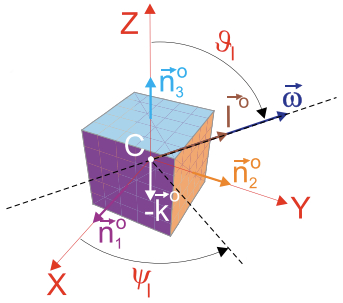
Rolling dice is a physical process rooted in the laws of physics, specifically mechanics and probability. When a die tumbles and bounces, its final resting position and the number facing up are determined by a complex interplay of its initial velocity, the surface it rolls on, and its shape and size. Friction between the die and the surface helps slow it down and contributes to its random stopping point.
Studies using high-speed cameras have even delved into the dynamics of a die throw. Researchers, like those in the paper "The three-dimensional dynamics of the die throw", found that while factors like gravity and air resistance play a role, the initial position of the die is the most significant factor influencing the outcome. Small changes in how a die is initially held or released can significantly affect its final landing. This is why techniques like "controlled rolling" or "dice sliding" can be employed in some settings to influence outcomes, highlighting the importance of true dice action - the vigorous, unpredictable tumbling of dice - to ensure genuine randomness and fair play.

The Yahtzee Cup
The Yahtzee cup is perhaps the most iconic component of the game and has evolved significantly since the game's introduction. More than just a container, the cup serves crucial functions in gameplay dynamics and player experience.
Traditional Yahtzee Cup Design:
- Shape: Cylindrical with a slightly wider base for stability during shaking
- Height: Approximately 3.5 inches (9cm) in standard sets
- Diameter: Typically 2.5 inches (6.35cm) at the opening
- Interior: Often textured to increase dice randomization during shaking
- Rim: Usually reinforced to prevent warping with extended use
- Branding: Classic cups feature embossed or printed Yahtzee logos
The Yahtzee cup serves several important functions beyond mere convenience:
- Fair Play: Standardizes how dice are rolled, preventing players from manipulating results
- Containment: Prevents dice from rolling off the playing surface or knocking over game pieces
- Randomization: The shaking action within the confined space ensures properly randomized rolls
- Experience: The distinctive rattling sound has become an integral part of the Yahtzee experience
- Tradition: Maintains the ritualistic aspects of gameplay that connect modern players to the game's history
Yahtzee Cup Materials and Variations:
Throughout Yahtzee's history, cups have been manufactured using various materials, each offering different qualities and play experiences:
| Material | Characteristics | Found In | Collector Value |
|---|---|---|---|
| Plastic | Lightweight, durable, cost-effective | Standard retail sets | Low-Medium |
| Leather | Premium feel, quieter rolling, softer interior | Deluxe editions | Medium-High |
| Wood | Classic look, solid weight, natural materials | Collector's versions | High |
| Silicone | Collapsible, travel-friendly, modern design | Travel editions | Low |
| Bakelite | Vintage material, historical significance | 1950s-60s editions | Very High |
Collector's Corner: Vintage Yahtzee Cups
Vintage Yahtzee cups from the 1950s through 1970s have become highly collectible items. The earliest E.S. Lowe Yahtzee cups featuring the original red and white color scheme can command prices exceeding $100 when in excellent condition. Particularly rare are the limited edition Bakelite cups produced between 1956-1961, recognizable by their distinctive weight and patina that develops over decades of use.

Yahtzee Score Cards
Score cards are essential to Yahtzee gameplay and have remained remarkably consistent in design since the 1950s. Every official Yahtzee set includes a pad of scorecards with enough sheets for multiple games.
Standard Scorecard Features:
- Format: Divided into "Upper Section" and "Lower Section"
- Categories: 13 distinct scoring categories (6 upper section, 7 lower section)
- Player Columns: Multiple columns for tracking several players (typically 6-8)
- Bonus Section: Calculation area for the 35-point upper section bonus
- Grand Total: Dedicated section for tallying final scores
- Instructions: Many scorecards include abbreviated rules on the reverse side
The evolution of Yahtzee scorecards offers fascinating insights for collectors and enthusiasts:
- 1950s Cards: Featured minimal design with basic typography and limited player columns
- 1960-70s Era: Introduced color coding and expanded player columns
- 1980-90s Period: Added detailed instructions and modernized graphics
- Contemporary Design: Incorporates enhanced readability features and space-efficient layout
Pro Tip: Scorecard Preservation
For serious Yahtzee players, consider laminating a few scorecards and using dry-erase markers. This environmentally friendly approach saves paper while allowing you to reuse scorecards indefinitely. Clear adhesive laminating sheets work perfectly and can be trimmed to fit standard Yahtzee scorecards precisely.

Writing Instruments
While often overlooked in discussions of Yahtzee sets, appropriate writing instruments are crucial for smooth gameplay. Although typically associated with traditional scorecards, keeping track of your Yahtzee score isn't limited to just a pencil and paper. In reality, anything capable of recording information can serve as a scorekeeper. The true essence lies in accurately documenting each turn to ensure fair play and track progress towards that coveted Yahtzee.
Traditional & Modern Tools
- Pencils: Still the classic choice, pencils offer the flexibility of corrections and adjustments as you play, making them ideal for casual games.
- Pens: For more competitive or official play, pens provide permanence, helping to prevent score disputes and maintaining a clear record.
- Dry-Erase Markers: When paired with laminated scorecards or mini whiteboards, these markers offer a reusable and eco-friendly scoring solution, perfect for frequent players.
- Digital Scoring Apps: Stepping into the modern age, numerous apps are available for smartphones and tablets that completely replace physical scorecards. They often automate calculations, store game history, and even integrate with online play.

Unconventional Record-Keeping
The beauty of Yahtzee's scoring system is its adaptability. Your score-tracking method can be as simple or as imaginative as you like:
- Computer Spreadsheets: For the meticulously organized, a digital spreadsheet can track scores, analyze game data, and even create custom score-tracking templates.
- Ancient Techniques: Imagine using an ancient Incan quipu - a system of knotted cords - to meticulously record your Yahtzee totals! While not practical for most, it highlights that any systematic method of data retention can be applied.
- Photographic Memory: For those blessed with exceptional recall, a purely mental tally of scores is possible. Though risky in competitive settings, it certainly eliminates the need for any physical instruments.
Ultimately, the choice of how you keep score is up to you and your playing group. Premium Yahtzee sets sometimes include branded pencils or other custom writing tools designed to fit within their game boxes, adding to their collector's appeal. Vintage enthusiasts particularly cherish original branded pencils from sets dating back to the 1950s-1970s, showcasing how even the simplest accessories can hold historical value.

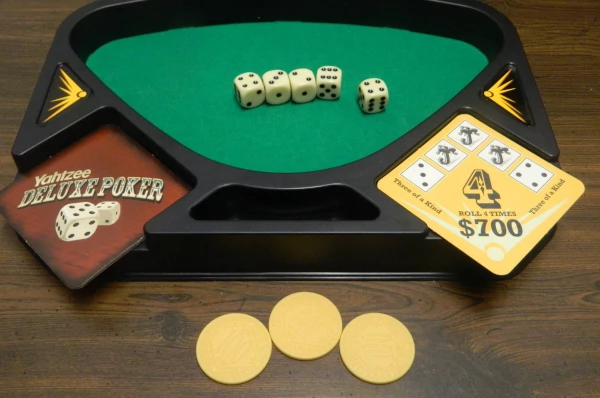
The Playing Surface
The surface where you play Yahtzee is far more important than many realize. While often overlooked, it significantly impacts both the overall gaming experience and, crucially, the fairness of dice rolls. The way dice tumble, bounce, and ultimately settle is directly influenced by the surface beneath them, making it a key factor in maintaining the randomness essential for a true game of chance and skill.
A proper playing surface ensures that each roll is genuinely random, preventing any subtle biases that could favor certain outcomes. It also contributes to a more enjoyable game by minimizing noise and keeping the dice contained.
Ideal Playing Surface Characteristics:
- Flatness: A perfectly level surface is fundamental for unbiased dice rolls. Any tilt, no matter how slight, can subtly influence the dice's path and final resting position.
- Sound Dampening: A surface with a moderate softness, like felt or leather, absorbs some of the kinetic energy from the rolling dice. This reduces the often loud clatter of dice on a hard table, enhancing the atmosphere without impeding the dice's natural dynamics.
- Containment: A bounded area, such as a dice tray with raised edges, is invaluable. It keeps the dice from scattering off the table and prevents them from interfering with other game components or objects. This containment makes gameplay more efficient and enjoyable.
- Size: An ideal playing surface should offer a minimum of 12"×12" (30cm×30cm) of clear space. This provides ample room for comfortably rolling the five dice and for players to clearly see their results without feeling cramped.
- Stability: The surface must remain stationary during enthusiastic dice rolling. A wobbly table or an unstable mat can inadvertently affect the dice's movement, introducing unwanted variables.
- Cleanliness: Keeping the surface free from crumbs, dust, or any other debris is essential. Even small particles can alter a die's trajectory or cause it to stop prematurely, affecting the purity of the roll.
Playing Surface Solutions
While a regular kitchen table or carpeted floor might suffice for casual play, many Yahtzee enthusiasts opt for specialized solutions to optimize their rolling environment:
- Dedicated Dice Trays These are among the most popular options. Often crafted from wood, plastic, or even metal, they typically feature raised edges and a felt or leather lining. This combination offers excellent containment and superior sound dampening, making for a satisfying and contained roll.
- Gaming Mats: Made from materials like neoprene or microfiber, these mats are designed specifically for dice and card games. They provide a consistent, non-slip surface that's soft enough to dampen sound and prevent dice from rolling too far, while also being portable and easy to store.
- Felt Panels: A simple and affordable solution, felt squares can be placed directly onto an existing table. They offer good sound dampening and a slightly textured surface that helps control dice movement.
- Leather Rolling Surfaces: A premium choice, leather provides an excellent balance of grip and bounce. It allows dice to tumble freely while also offering a soft landing that dampens sound and prevents excessive rolling.
Yahtzee Tables
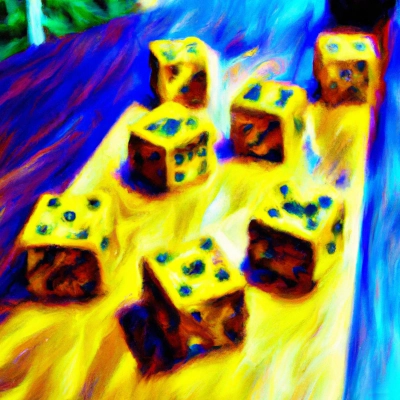
For the ultimate dedicated Yahtzee experience, some players invest in or even build custom Yahtzee tables. These are not just any flat surface; they are purpose-built gaming tables designed to meet all the ideal playing surface characteristics and more. They provide unmatched stability and containment, creating a truly immersive and organized environment. Beyond custom-built pieces, several types of Yahtzee tables cater to different needs and preferences:
- Portable Yahtzee Tables: These are compact and lightweight tables designed for easy transport and storage. They are ideal for playing Yahtzee on the go, whether at a friend's house, on vacation, or in small living spaces.
- Foldable Yahtzee Tables: Similar to portable tables, foldable Yahtzee tables can be easily set up for play and then collapsed and stored away when not in use. They come in various sizes and designs, offering a convenient option for those who want to play Yahtzee at home or on the go without a permanent setup.
- Wooden Yahtzee Tables: Crafted from high-quality wood, these tables provide a classic look and feel to the game. They are a popular choice for those who want a traditional, elegant, and durable Yahtzee experience, often featuring integrated storage or rolling areas.
- Plastic Yahtzee Tables: Plastic Yahtzee tables are durable, lightweight, and often more affordable than other types. They come in a variety of colors and designs, making them a great, family-friendly option, especially for households with children.
- Electronic Yahtzee Tables: These innovative tables feature built-in electronic scorekeepers, sensors, and sometimes even light and sound effects. They automate score tracking and can enhance the game with modern features, perfect for those who want a technologically advanced Yahtzee experience.
Custom Yahtzee boards (which are essentially table toppers or integrated into tables) can incorporate dedicated areas for the dice cup, an optimized rolling zone, and even recessed compartments for scorecards and writing instruments, making them an excellent investment for serious players.
Tournament Standards
In competitive and tournament-level Yahtzee, the playing surface is often standardized to ensure complete competitive integrity across all participants. Organizations like the World Yahtzee Association may recommend surfaces with a specific Shore A hardness rating, typically between 75-85, to guarantee optimal and consistent roll characteristics for all players. This ensures that the physical environment provides a perfectly level playing field for every contestant.
Science and Fair Play

At its heart, a dice roll is a physical process governed by the laws of physics, specifically mechanics and probability. When a die is released, it tumbles, bounces, and rotates, creating the randomness that determines its final face-up position. The outcome isn't just luck; it's a complex interplay of the die's initial velocity, the friction of the surface, its shape, and its size.
Research, including studies using high-speed cameras, has delved into the dynamics of a die throw. These studies indicate that while factors like gravity and air resistance play a role, the initial position of the die and the friction of the surface are paramount in influencing the outcome. Even small, seemingly insignificant changes in how a die is held or released can significantly affect its final state.
This scientific understanding underscores the importance of dice action for fair play. "Dice action" refers to the amount of kinetic energy and unpredictable movement the dice exhibit from the moment they leave the cup until they come to rest. A vigorous roll, typically within a dice cup and onto a suitable playing surface, ensures a high degree of randomness. Conversely, a "fake roll" or controlled throw, where a player attempts to manipulate the initial conditions, undermines the game's integrity by reducing randomness. Thus, ensuring proper, uncontrolled dice action is fundamental to upholding the values of fair play in Yahtzee.

Storage and Organization
Complete Yahtzee sets include storage solutions to keep all components together and protected between play sessions:
Standard Yahtzee Storage Features:
- Game Box: The iconic rectangular box with distinctive Yahtzee branding
- Internal Organization: Molded plastic inserts or cardboard dividers
- Component Protection: Designated spaces for cup, dice, and scorepads
- Rule Storage: Pocket or slot for instruction booklet
- Travel Security: Some editions feature latching lids or magnetic closures
Storage designs have evolved considerably throughout Yahtzee's history:
- 1950s-60s: Simple cardboard boxes with minimal internal organization
- 1970s-80s: Introduction of plastic inserts and more durable box construction
- 1990s-2000s: Enhanced travel editions with integrated components
- Contemporary: Eco-friendly packaging materials and space-efficient designs
Collectors often value original packaging as much as the game components themselves, with mint-condition boxes from early production runs commanding premium prices in the collectibles market.
Odds & Ends
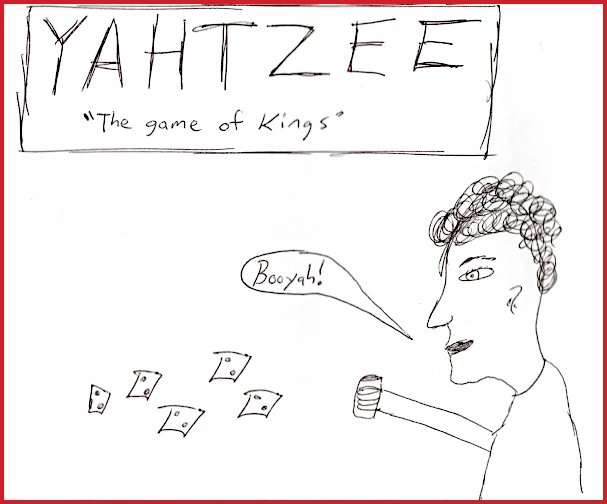
Beyond the core components of dice, a dice cup, and score sheets, the world of Yahtzee opens up to a delightful array of supplemental equipment and personalized items. While not strictly necessary for gameplay, these additions can enhance the experience, add a touch of personal flair, or even become part of a player's ritual.
One common, albeit superstitious, element in many games, including Yahtzee, is the concept of lucky charms. Players might carry a special coin, a small trinket, or even consider a particular piece of clothing their "lucky" attire. While these items hold no actual sway over the dice, the psychological boost they provide can sometimes make a player feel more confident in their rolls. Online Yahtzee games have even incorporated digital "lucky charms" or customizable dice designs that players can earn to personalize their virtual gameplay.
Finally, customized gaming items have become increasingly popular for Yahtzee enthusiasts. This ranges from personalized dice engraved with initials or designs, to custom-made dice cups in unique materials or colors, and even reusable dry-erase scorecards. Some players create their own large-scale "Yard Yahtzee" sets with oversized dice and scoreboards for outdoor play, while others opt for themed Yahtzee sets. These customized items allow players to express their individuality and make their Yahtzee sessions truly their own, transforming a classic game into a unique personal experience.
Yahtzee Pre-Game Inspection
1. Check that all five dice are accounted for and in good repair. Consider adding a few spares in case of loss or damage.
2. Check the integrity of the Yahtzee cup or shaker. Reinforce any weak spots if needed.
3. Check the scorecard supply and replenish sufficiently. If planning to have players make their own score sheets, ensure a supply of related tools like blank paper and rulers.
4. Check that there are enough pencils for all expected players. Pens or other writing implements may be used if necessary.
5. Check that the official rules booklet is in place to nip potential arguments in the bud.
6. Check for any supplemental equipment such as lucky charms, Yahtzee Bonus candy rewards, or customized gaming items.
Note: Yahtzee Bonus Chips are the only useless piece of official Yahtzee equipment, made redundant as the Yahtzee Bonus is recorded on the score card. These vestigial remnants of the game’s shared ancestry with Poker can be discarded at the owner’s discretion.
The Complete Yahtzee Set
Dice may be the most vital piece of Yahtzee equipment but they aren’t the only one. Equipment enhancement is encouraged with regards to the score cards and pencils, but these upgrades are purely cosmetic upgrades to add some spice to the game. Other types of equipment however can be used in strategic ways to make up for possible imperfections in the dice, maintain equal playing conditions, or even improve your total score.
One of the most popular pieces of supplemental Yahtzee equipment is the backstop. This is simply any hard surface that can be used to roll the dice against. A heavy book can serve well here but the most convenient backstop is typically the Yahtzee box itself. A backstop introduces much higher levels of randomization into any given dice roll by increasing the dice action. The concept is employed in the dice game craps as an anti-cheat technique. A player is required to throw or “shoot” the dice against a backstop to discourage fake rolls.
Another way to amp up dice action while discouraging cheating is to mandate the use of a dice cup or shaker. Fake roll techniques require the player to roll by hand so they can simulate the appearance of a roll while maintaining control of the dice’s trajectory. A shaker eliminates the threat by adding another layer of randomness to every roll. The Yahtzee cup also provides an outlet for players’ individuality, through the use of personalized shakers, like the antique version from grandma’s set or your favorite beer stein.
Performance-enhancing Yahtzee equipment is not a risk to the game’s integrity but dereliction of game sets is. The successful Yahtzee host this summer season will keep their gaming materials in a secure location, safe from decay and tampering. Should a player, inspired by the runner Mr. Mathanga, choose to go “barefoot” and not use a shaker at all the results could end up much the same as the race. Proper use and maintenance of all equipment will help ensure that the upcoming global Yahtzee binge can continue for as long as needed.
Learn More about Yahtzee Game Equipment
Some variations might require additional equipment, such as a special Yahtzee dice set or a specific type of scorecard. Or they might use a digital platform, in which case, you only need a device with internet connection and the appropriate application or website. Explore the further realms of Yahtzee game equipment:


